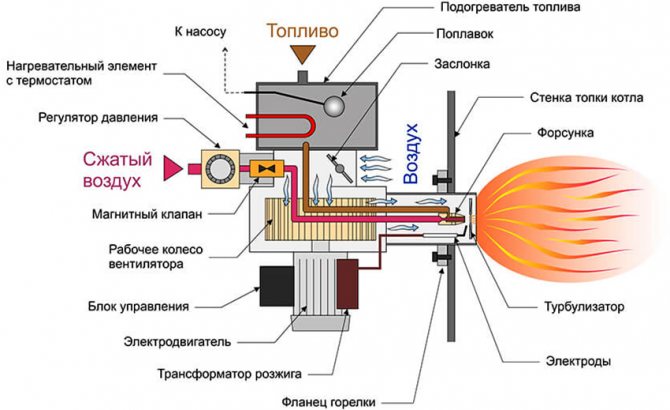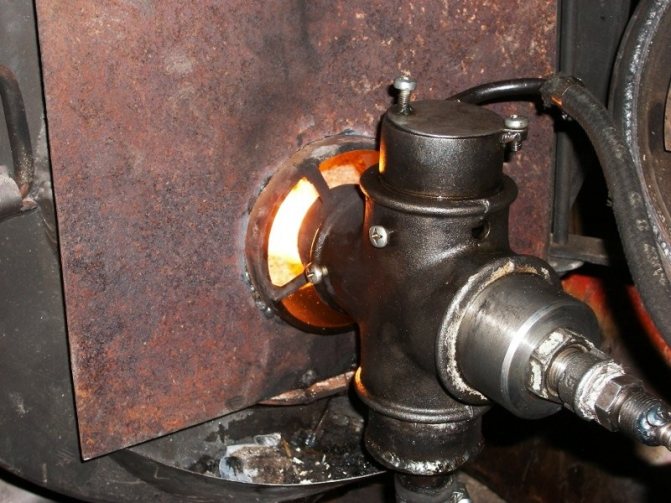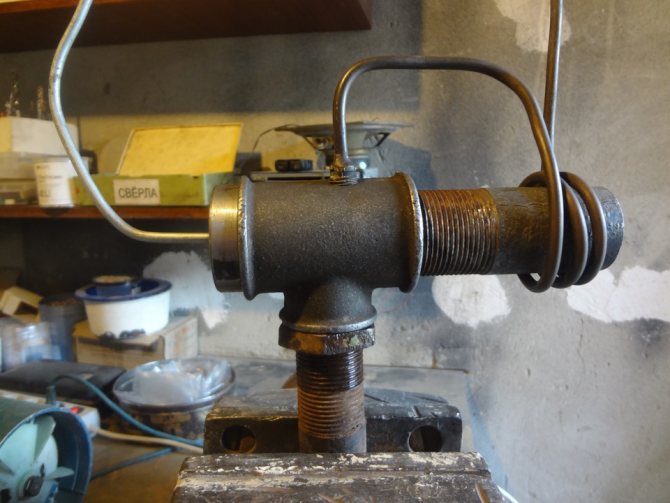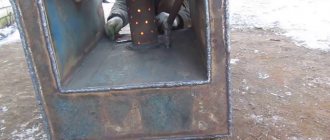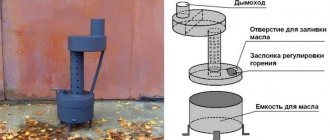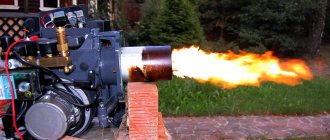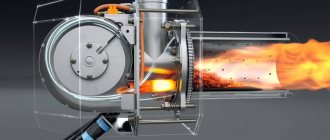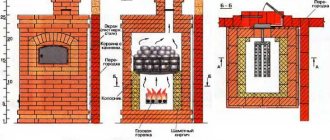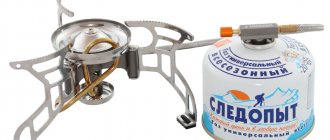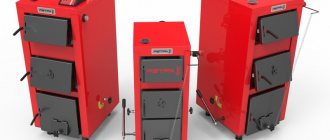Upon closer examination, it turns out that the proprietary equipment for dirty and unstable quality liquid fuel is expensive and somewhat capricious. In this case, Babington burners help the craftsmen. The design is not critical. Self-made samples are workable. But most importantly, the Babington burner makes it possible to achieve the main goal - to save as much as possible on the most expensive communal apartment - on heating.
Why Choose Babington Burner
Used oil is difficult to dispose of, and some organizations do not know how to dispose of it. Meanwhile, it is an excellent energy carrier, with an average heating value of 1 kW / liter, i.e. at the level of diesel fuel and gasoline. It is extremely profitable to drown the working hours, if it is obtained free of charge. How much money is spent on heating a private house? ... It is enough to get 5 tons of shareware mining and ... But the problem remains to burn it.
- The advantage is that the Babington burner can run on the most contaminated liquid fuels. The quality can change even in the process of direct combustion, while energy efficiency can decrease, but the operation of the device remains stable.
- The second advantage is that the composition of the fuel mixture is not regulated. In a normal design, combustion always occurs with an excess of air (oxygen), everything that can ignite burns out.
- Maintenance of the combustion zone is extremely simple or not required, that is, the burner, the nozzle does not fail due to exposure to the flame - the technique is relatively reliable.
How is this achieved in design?
Disadvantages of a simple burner for working off
- The Babington burner contains an air compressor, and often an oil pump (why not consider below). This requires power and maintenance. Therefore, the burner is volatile and also with some probability of technical breakdown.
- The second drawback is that the burner operates at a constant power, which is incorporated into its design. Power can be changed stepwise, changing structural elements (if any), but these are too rough and large values, for example - 22, 35, 57, 70 kW. In fact, the device can only work in the "warmed up - stopped" mode, but you need to turn it on manually ....
- It is possible to light a homemade Babington burner only from some kind of torch or blowtorch. It is necessary to apply a flame to the area of a combustible mixture of oil and air in order to ignite it. Every time you need to turn on the heating, you need to visit a dirty furnace. And also to turn it off. But why is everything dirty?
- The entire fuel system with open oil tanks, with possible manual oil supply, implies the presence of oil vapors, odors, spills. It is unacceptable that doors from such an aggregate workshop lead directly into the house. Therefore, the room with the installed Bangbinton burner and the boiler on which it can operate is specially prepared separately, and it also creates the possibility of mechanical pumping of waste from storage tanks.
The principle of operation of the Babington burner - what is the secret
The principle of operation of a burner for burning oil is the formation of an air stream that hits the stream of liquid and sprays it. The mixing of oxygen and oil takes place directly in the combustion chamber.
But the main secret of the Babington burner - the special uniformity of the fuel supply to the combustion zone under the influence of two forces - surface tension and gravity - does not depend on the operation of any mechanisms. The fuel simply flows down the metal surface.
Hence the main advantage - the ability to burn contaminated mixtures. There are no bottlenecks on the way of fuel movement, it is fed through wide tubes and then falls on the surface which flows around….
Design features
At the heart of the design is a hemisphere (ball) along which fuel flows in a wide stream from top to bottom. The hemisphere has a very narrow opening through which an air jet is supplied. Air sprays oil on its way, forming a stream of finely dispersed mixture, which ignites and burns safely.
Air is supplied to the hemisphere under low pressure (up to 0.5 atm) by a compressor, and oil flows out of the tube - pressure equalizer (the same level with overflow). But the viscosity of the oil should not be high and stable. To do this, it is heated in a copper tube, which wraps around the burner in 2 - 3 turns, which stabilizes the thickness of the flow on the hemisphere, and hence the combustion power.
Burner operation principle
The burner works by atomizing the fuel with a jet of high pressure air. The fuel flows down a spherical surface with a small hole drilled into it. Inside the sphere there is a tube through which air flows under pressure. It breaks out through a narrow opening, rips off some of the fuel and sprays it, forming a conical torch.
The rest of the fuel flows by gravity into a special sump located under the sphere. It can then return to the main reservoir.
Some consider the principle of operation of the torch to be similar to the principle of operation of a blowtorch, but there is a significant difference between them.
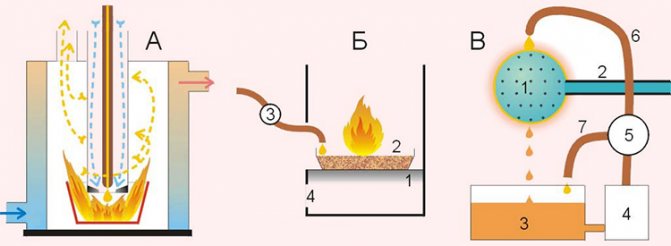
The principle of operation of the burner during mining
In a blowtorch, air displaces the fuel, but does not mix with it. And in a Babington burner, a stream of air passes directly through the fuel stream, forming a cone of atomizing aerosol. This ensures better contact of small droplets with atmospheric oxygen and allows the fuel to burn more efficiently. That is why it became possible to burn oils, while gasoline is used in a blowtorch.
We remake a blowtorch for testing
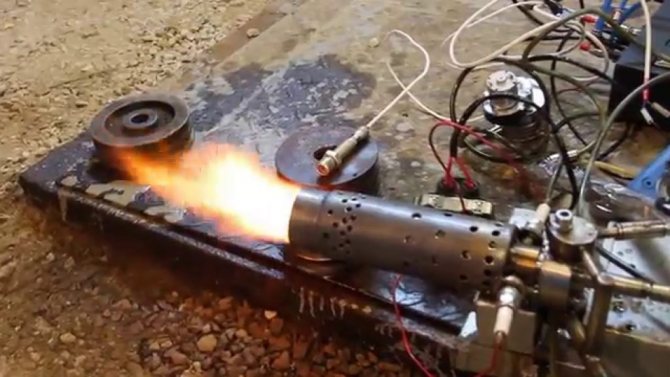

Many experts, having learned the mechanism of operation of the Babington burner, are trying to remake the blowtorch for burning recycled oil. The task is a cheaper and simpler production, because the algorithm of operation in these devices is almost the same.
This is a misconception because the soldering lamp works differently than the self-assembled burner described in this article.
The lamp accumulates oxygen in the fuel tank for one reason - to push it out and direct it to the atomizer. During this time, the fuel heats up and evaporates.
The atomizer directs fuel vapors to the place of combustion, the liquid can be seen there only during the ignition process, when the base of the blowtorch is still cold.
The recycled oil cannot be evaporated and the sprayer will release it in large droplets, which will not lead to good combustion.
And the cross-section of the device with a calibrated hole for dosing the flow of liquid will quickly be clogged from various impurities.
Conclusion: it will not work to change the principle of operation of a blowtorch to a burner.
How to make a burner yourself
The simplicity of the burner design makes it easy to make it in a home workshop or in a garage. Let's consider how to make a burner of the simplest design.
First of all, you should select the materials:
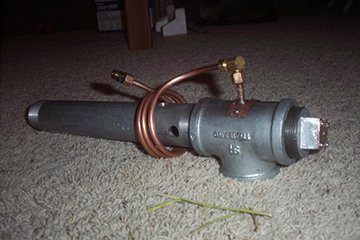

- The body of the future burner is a steel tee with an internal thread. Inner diameter - 50 mm.
- The nozzle is made from a squeegee (a piece of threaded pipe). The outer diameter must be 50 mm to fit the body. The length of the nozzle is not less than 100 mm.
- The connection to the fuel line is made through the DN 10 elbow.
- The fuel line is a DN 10 copper tube with a length of at least one meter.
- The air duct is a steel tube of the same diameter.
- A metal sphere or hemisphere that can freely enter the tee.
- Fuel tank and settling tank.
- Heating element for fuel.
We start self-production
Let's list the main tools that will be needed in the work:
- welding machine;
- Bulgarian;
- lathe.
In appearance, the burner looks like a small empty gas cylinder, on the upper and lower sides of which oppositely directed steel pipe sections are welded. The inside of the burner is only 1 inch (2.54 cm) in size and the walls are quite large.
The pipe section at the bottom is required to supply oil and air to the part where the combustion occurs. The short tube at the top is used as the burner flare from which the flame will be spewed out.
Step by step guide
Step one - drill a hole in the sphere. This cannot be done using ordinary tools, because the hole diameter should be from 0.1 to 0.3 mm. You need a special drill and a special chuck. If you have a drill with a diameter of 0.1 mm, and the power of such a torch is not enough, you can make two or three holes. Such holes are drilled at high speeds.
When the sphere has a hole, it is attached to the air supply tube. Then the structure is installed inside the tee. At the exit of the tube from the body, a rubber plug is made, which is necessary so that the air under pressure does not burst out. A hole is drilled in the plug through which the tube will pass.
We select the power
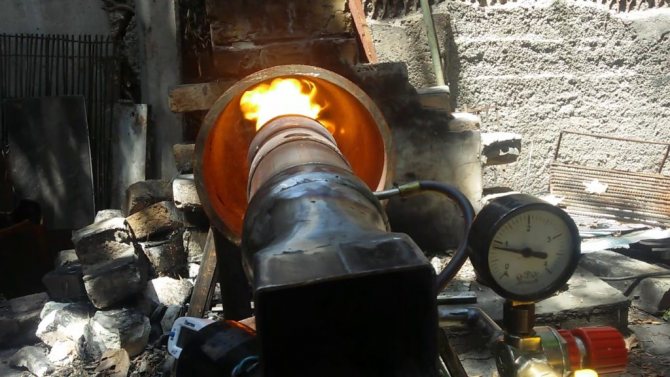

The bottom line is that it is quite difficult to make such calculations yourself according to the formulas. There is information obtained through practice, and it says that different specialists make several holes with a width of approximately 0.2 mm at once.
Sometimes the data is more precise: by making a burner with one hole 0.26 mm wide, it is possible to achieve a burner power of up to 20 kW (depending on which fuel was used).
It is better not to make holes with a large diameter (more than 0.4 mm), because this can lead to poor operation of the injector and the recycled fuel will burn. In addition, the device will be more difficult to ignite and excessive consumption of fuel fluid will begin.
Based on this information, it is possible to select the power of the device by the number of holes. To achieve 33 kW, it is necessary to make not one hole 0.20 mm wide, but two.
The distance between them should be more than 9 mm so that the fuel mixture flames do not extinguish each other. In practice, when a Babington burner is operated through one 0.26 mm wide hole, the average oil consumption is continuous up to 2.5 l / h.
Manufacturing recommendations
There are some helpful tips to help you make your burner:
- The hole should be exactly in the center of the sphere, and its axis should coincide with the axis of the duct. Otherwise, the torch will strike to the side, and this creates an additional danger.
- Instead of drilling a hole, you can take a ready-made jet. To do this, a hole is drilled with an ordinary drill a little less than the outer diameter of the nozzle, then it is refined by hand, and the nozzle is simply hammered inward.
- If there are more than one holes, the distance between them should not be less than 7 mm.
- For ignition, you need to make a hole on the side of the nozzle.
- In the simplest case, the fuel must be fed to the burner by gravity, but a fuel pump can also be used.
- Even a low-power compressor (for example, from a refrigerator) can cope with air injection. The working pressure inside the sphere does not exceed 4 bar (4 * 10 5 Pa).
Waste oil burners
The principle of operation of traditional oil burners is almost the same, they differ only in design features, level of automation, power and efficiency.
There are modified types of burners:
- burners with pre-gasification of fuel;
- evaporative burners.
Some oil burners combine all the elements in their design: pump, filter, heating chamber and compressor. Such models save space and do not require the installation of additional equipment.
All burners can be divided according to the operating mode:
- single-stage burners can only work in one mode;
- two-stage are capable of operating at 40% of their power and at 100%, that is, they have 2 modes;
- modulating burners operate in a wide power range: from 10 to 100%.
Video on the topic
# 1 professor
winner 2008: best Manta
- Our users
- Posts: 809
- Gender: Male
- Interests: Everything related to OPEL MANTA!
- Car: opel manta
- Real name: Ivan
- Place of residence: City of Yeysk. Krasnodar Territory
I actually decided to open the topic. In our cold time, I think it is quite important to heat garages. boxes. at home. The device and the principle of operation can be viewed on YouTube. https: //www.forumhous. / threads / 84957 / true babington men gather here https://lunohodov.net. t. asc & start = 0 Here the photo shows a very primitive burner device.
The burner itself was invented in the 60s in America. the patent was recently withdrawn. the drawings were in the public domain. I assembled such a burner myself. 1. oil supply. very important! consists of a reservoir. oil pump (vaz.gaz.mot ural.i.d.) in my case it is a gas 402 motor .. fell with a broken drive. electric gearbox. can be with a vase. but better with a foreign car. they are more powerful. Power Supply. for us in our case, 5 volts is enough for the gearbox. a block was taken from a computer of 450 watts. we close the green with a black wire in the center of the block (green is the only one there), we throw it on the yellow-black (12 volts) or on the red-black (5 volts) load. any. then we turn it on. without load, the unit will fail after being turned on. Depulsator is a device for smoothing the supply of oil from the pump. It consists of a small cylindrical reservoir with a volume of 50 grams with an upper oil supply into it. return flow in the middle and fuel supply to the burner. automatic tena .. there are a lot of them on sale. any with a temperature controller.
Principle of operation of waste oil burners
Oil burners are also called injectors. Their work is based on the principle of injection. That is, a strong air flow is created through the nozzle and a vacuum is formed in the fuel supply line, due to which oil flows into the combustion chamber and mixes it with air.
The efficient combustion of any liquid fuel depends on the intensity of its atomization. And the efficiency of spraying depends on the special design of the nozzle and the force of the compressed air pressure.
Fuel preparation
Before entering the burner, the fuel is filtered in a fuel filter and preheated in a special chamber. This is necessary to reduce the viscosity of the oil. For burning of mines, preheating is 80-900C. Fuel preheating temperature control is carried out automatically.
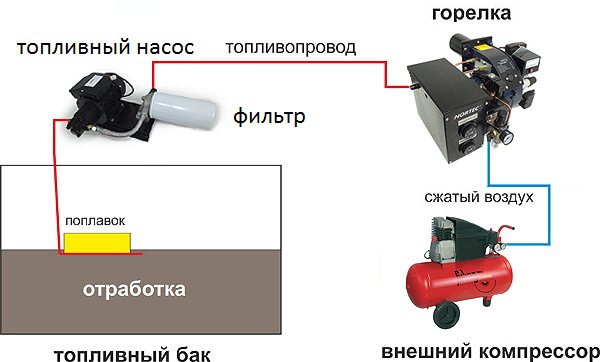

Diesel fuel does not need to be preheated as it has sufficient fluidity.
Fuel supply
Fuel from the tank is pumped out by the fuel pump. Its intake is carried out from the surface of the mirror of the flammable liquid. This is due to the fact that mining may have mechanical impurities or water that settle at the bottom of the tank.
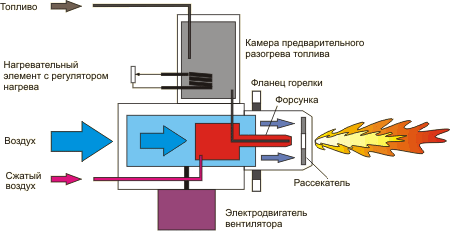

Combustion process
To maintain the combustion process, a certain amount of oxygen must be present in the combustion chamber. The air that is used for rarefaction and fuel supply is called primary air, and it supports the combustion process, but this is not enough.
An additional fan supplies secondary air. The intensity of the fan is regulated by a damper and participates in the operation of the automation system.
Fuel ignition
For the automatic ignition of a liquid fuel boiler, an ignition transformer and electrodes are used.The fuel is mixed with a jet of air and atomized into small droplets. Then it is fed into the combustion chamber and ignites under the influence of high temperature.
Security measures
- A burner fueled with oils and other GSP can be dangerous if installed and used incorrectly; in order to avoid a fire, a number of measures must be followed:
A burner with an open nozzle must not be left running unattended!
The Babington burner, in contrast to the blowtorch converted for mining, is a reliable and durable unit that does not require complex maintenance. It is enough to periodically clean the fuel system, tank and sump, blow the air duct in idle mode, and also monitor the compressor and oil pump. A working burner is a reliable and economical unit with a long service life.
Advantages and disadvantages of a liquid fuel burner
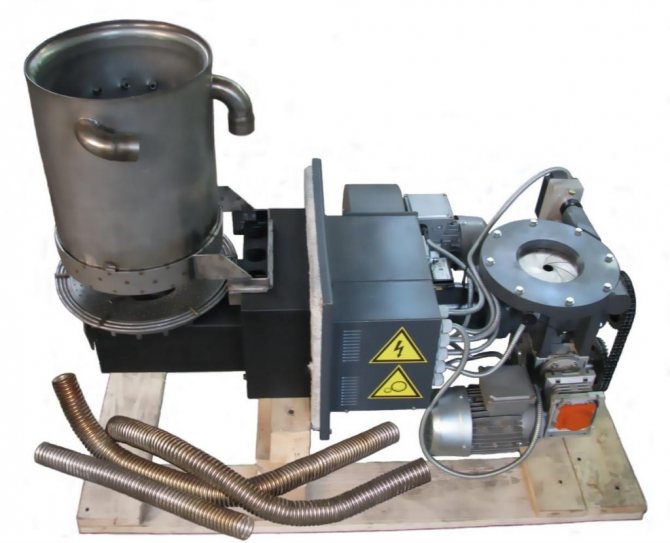

This equipment has a lot of advantages, the main of which are:
- Ease of DIY manufacturing and operation.
- Widespread distribution of drawings for the manufacture of devices.
- The cheapness of waste oil used as fuel.
- These devices are perfect for transport organizations and companies where there is a lot of testing. Thus, it is possible to dispose of the waste and heat the premises.
- Efficiency and functionality of devices.
- Device mobility.
Despite the listed advantages, the burner also has a disadvantage. It is quite demanding on the quality of the used oil.
Advantages and disadvantages of a do-it-yourself burner
Each technical device has a number of useful qualities and shortcomings. Obviously, there are more pros than cons to this device. The main advantage is the utilization of waste materials with the greatest benefit. Other advantages of equipment for the disposal of oils and liquid fuels:
- burning mining contributes to the preservation of the environment;
- ease of use and high energy efficiency;
- the manufacture of the device is available in ordinary household conditions;
- obtaining heat at a minimum cost of raw materials;
- a simple scheme for manufacturing a structure, understandable drawings;
- a homemade device can be made from improvised means;
- application in workshops and at enterprises where a lot of processed raw materials are accumulated that require disposal;
- the small dimensions of the burner allow it to be moved if necessary;
- mining and the lowest-grade oil go to the furnace;
- device functionality;
- relative fire safety;
- reuse of used oil.
The main plus of the burner is the utilization of used oil with benefit.
Disadvantages:
- not recommended for summer cottages and living quarters due to burning and smell;
- the need to equip the premises with a fire extinguisher;
- it is imperative to follow all the recommendations for the manufacture of the burner;
- the nozzle or nozzle should be periodically checked (whether the holes are clogged with solid particles);
- sensitivity of the nozzle or nozzle to dirt;
- additional power supply of the components of the apparatus (pump, compressor).
Fuel features
Waste fuel is not only dirty but also very sticky. One of the tasks of engine oil additives is to ensure that they stick with a thin layer of rubbing surfaces operating in difficult conditions.Therefore, the burners during mining work almost exclusively with fuel heating, which increases its fluidity: too viscous fuel does not mix properly with air, does not pass through the nozzle nozzle, or does not cover the spray head with an even layer (see below).
It is also not so easy to set fire to mining: what would it be for engine oil burning in a very hot engine? In fact, only an electric spark and a gas torch are suitable for quick and reliable ignition of a mine. There is, however, one exception, see below.
And third, the mining is contaminated not only with solid particles, but also with water and / or antifreeze that got into it from the internal combustion engine cooling system. Fuel filtration is a complex process. It makes sense to organize it only if fuel testing is constantly available, for example, in a sufficiently large and busy car workshop, and the burner for testing for irregular use should be insensitive not only to solid contaminants, but also to fuel water cut.
Electricity for the burner
Hence, an unfavorable conclusion follows: there are no non-volatile burners during mining. There are ways to burn the mining without pressurization and heating, but such devices (see below) give acceptable technical and environmental indicators only as part of the heat-generating devices developed at the same time and are not burners as such. Therefore, if your power supply is unreliable, and there is enough work off, it would be better to make a furnace or boiler for it.

